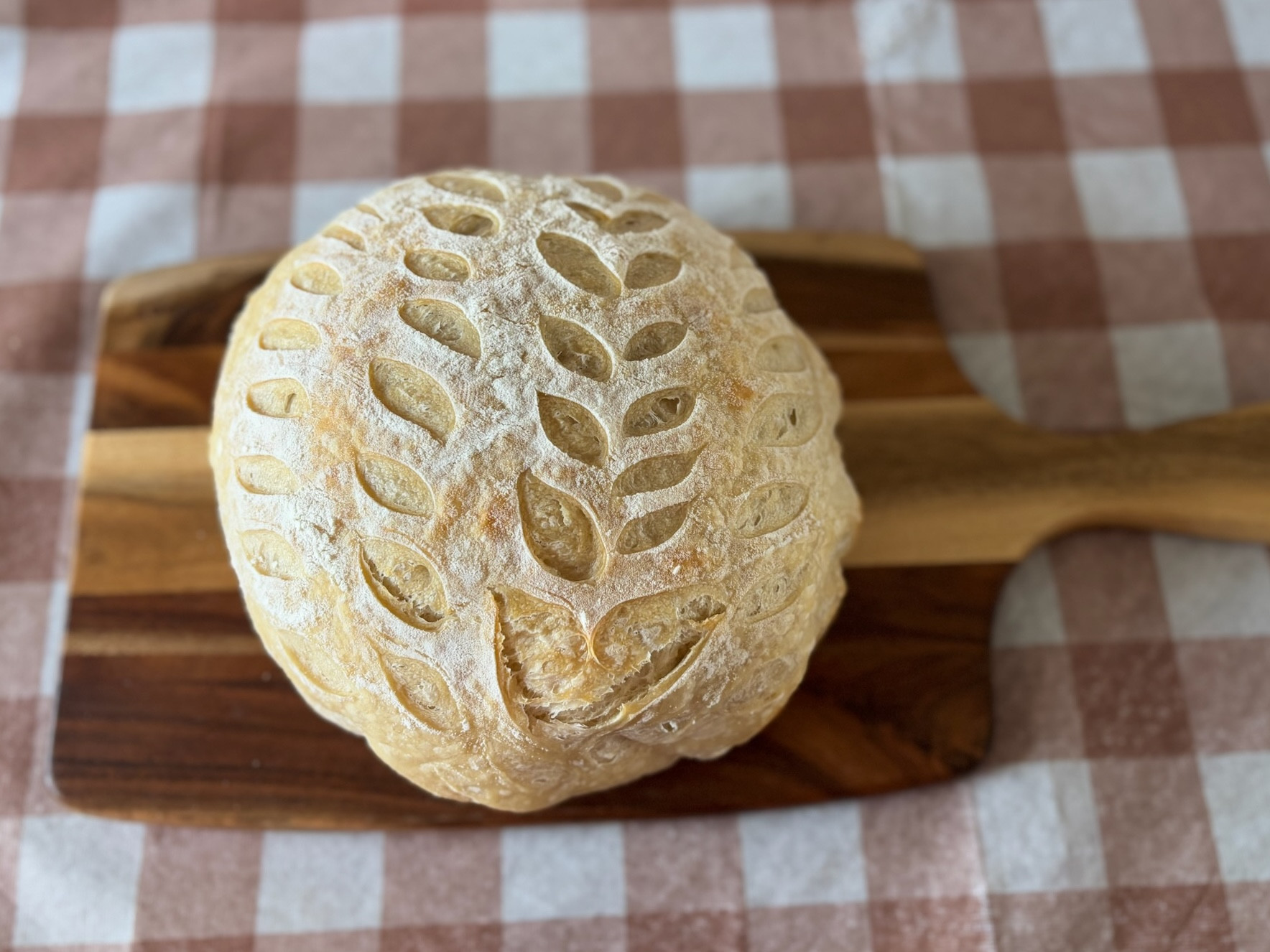Why choose old fashioned sourdough bread? What makes it better?
posted on
January 17, 2025

Let's get this straight - sourdough came first.
It might feel like a new trend, but it's actually the most old fashioned leavened bread you can eat. I mean, active dry yeast wasn't even invented until 1943!
As we've heard time and time again when it comes to modern conventional food, convenience and cost typically come before health. Ugh. This is especially true when it comes to bread.
Modern bread in supermarkets has 22.5 ingredients on average. I mean, wow! Our sourdough bread is made with just 3 - flour, water, and pink Himalayan salt.
Why all those other ingredients? To make what modern consumers consider the "perfect bread".
Sugar to make it sweeter. Yeast to make it rise instantly (instead of waiting for the sourdough culture). Dough conditioners for better volume. Preservatives to make it last for weeks. Emulsifiers to give it the same consistency every time. Artificial colors to make it look good.
Did you notice a trend with those extra ingredients? None are there to improve the nutrition of the bread (on the contrary, many come with potential risks). Yup, it's all about appearance and flavor.
Enter sourdough, the better bread. It's more nutritious than yeast bread.
There are 4 big reasons why:
1- Carbohydrates are broken down during fermentation, making them easier to digest.
There are naturally occurring bacteria and yeasts in flour. When flour is dry, they're inactive. But, when you add water, they come to life. It might seem like magic... but it's science on a microscopic level.
These lactic acid bacteria and yeasts feed on carbohydrates. They break them down and produce carbon dioxide gas. That's what makes a sourdough culture bubble and what makes bread have those wonderful pockets inside.
This is also what makes sourdough bread more digestible. Carbs are one of the hardest things for your body to digest. But the carbs in sourdough bread are pre-digested, making it a lot easier on your body.
2- Gluten is broken down during fermentation, making it easier to digest.
Same story as above. The naturally occurring bacteria and yeasts break down gluten, too! That means there's less gluten in sourdough bread compared to yeast bread.
This doesn't mean that those with Celiac disease can eat it, but it does mean that it's more digestible for most. But it does mean that many people with gluten sensitivity can handle sourdough but not yeast bread.
3- Phytic acid is broken down, which makes the minerals bioavailable.
Phytic acid in unfermented bread binds to minerals, making it hard (and sometimes impossible) for our body to absorb them. But, sourdough fermentation creates phytase, an enzyme that breaks down the phytic acid. This makes the minerals remain bioavailable. Because of this, sourdough bread is more nutrient-dense than yeast bread.
4- Prebiotics are naturally present.
Prebiotics are a type of fiber that feed on the good bacteria in your gut. When you eat them, it helps probiotics grow and thrive in your digestive tract. Beca-glucan is a specific prebiotic in sourdough bread that can boost probiotic activity after digestion.
Buyer beware --- fake sourdough is a thing!
Watch out for yeast and sugars as ingredients. Real sourdough does not include them.
Also keep an eye out for expiration dates weeks or months away. Authentic sourdough will only last a few days.
And lastly you may want to ask about fermentation time. A true sourdough will ferment 3.5-7 hours. There's a new thing called "sourdough powder", which is basically an active dry yeast that makes the bread taste like sourdough.
Did you know we offer handmade artisan sourdough bread?
It's the real deal sourdough bread made with just flour, water, and Himalayan pink salt. We have both regular and organic. Every loaf is made by Esta, right here on our farm.
Our loaves are crusty on the outside and soft and chewy on the inside. It's everything you expect from an old fashioned bread. If you won't eat it within a few days, you can freeze it for later!
If you have any questions about our sourdough bread, comment below or contact us. We're super transparent and are happy to answer any questions you may have 😊
-----
Sources
- In the Land of the World's Oldest Bread, a Return to an Ancient Baking Culture
- Do you know what’s in your bread?
- Sourdough Fermented Breads are More Digestible than Those Started with Baker’s Yeast Alone
- Sourdough and digestibility
- Is Sourdough Bread Healthy? Nutrition Facts & Benefits
- How to Spot a Fake Sourdough





